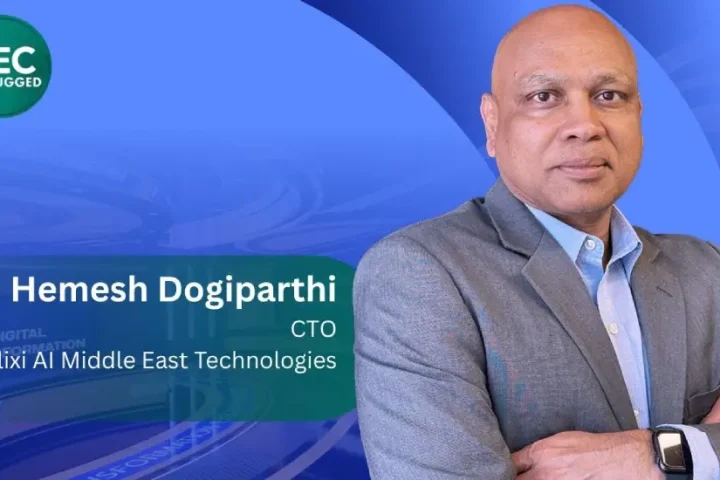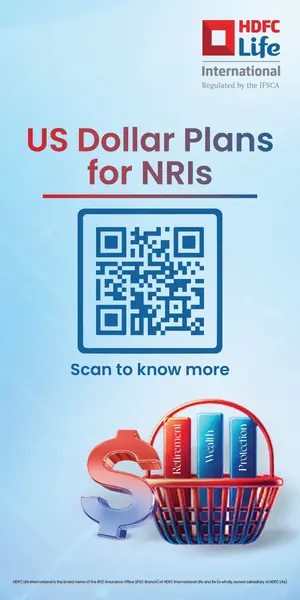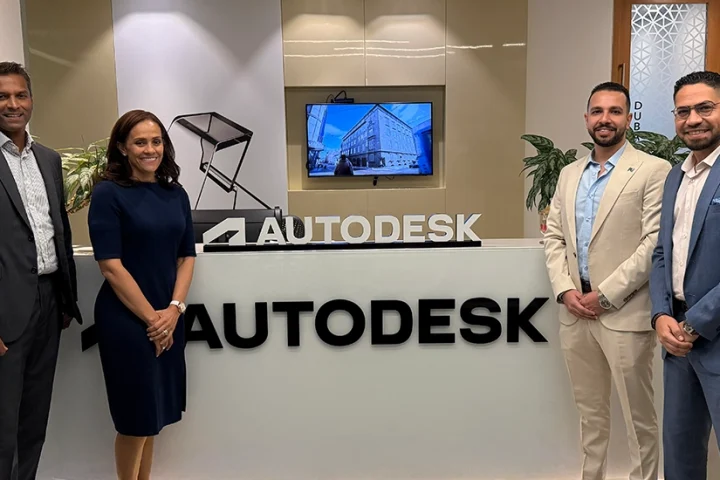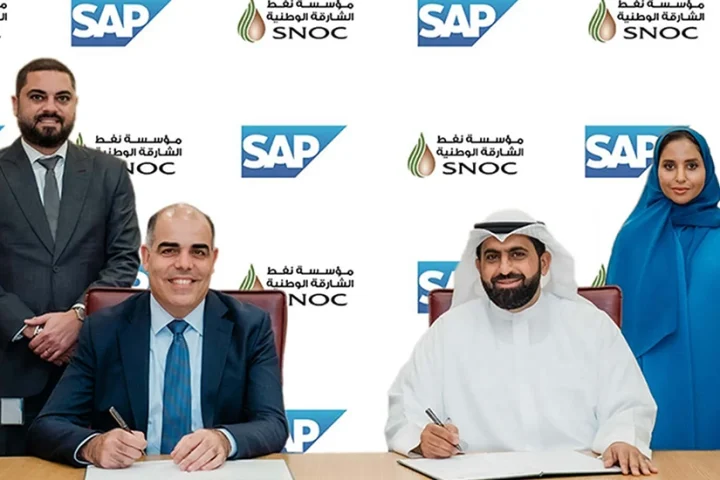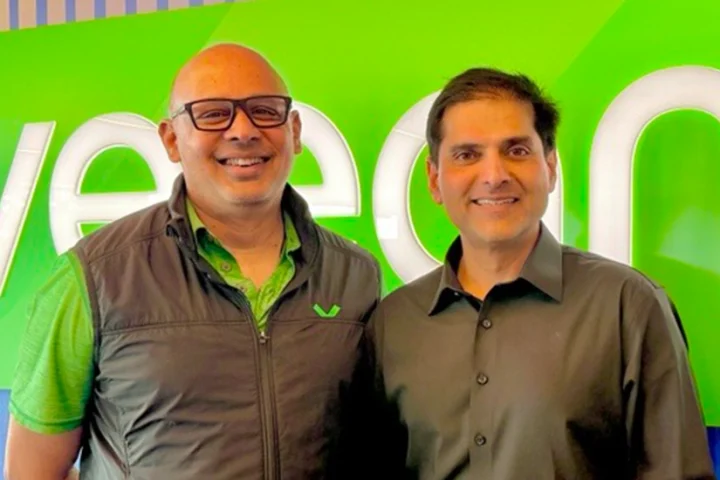Hemesh Dogiparthi, Head of AI Practice, shares how the company is launching a suite of vertical-focused products that take AI from roadmaps to real-world impact.
What are you showcasing at GITEX this year?
A couple of things. There’s some really exciting work happening at Exelixi AI right now. Last year, we focused on consulting – developing strategic roadmaps and milestones for customers, and providing them with insights into where they were in their AI adoption journey and where the opportunities might be.
This year, we’re actually launching a few products. These are out-of-the-box solutions tailored for specific verticals. Essentially, some of the traditional solutions we used to deliver as projects have now been developed into full-fledged products.
We’ve grouped them into four categories: ExelVision, which includes computer vision–based applications; Finable, which focuses on financial services applications; ExelEMR, which is a healthcare-related electronic medical records system; and ExelEd, which covers education-related applications. So across these four verticals, we’re offering complete end-to-end solutions, and that’s what we’ll be showcasing at GITEX this year.
And how does GITEX fit into your broader strategy of engaging with customers?
We’ve been participating in GITEX for a while now, and we understand the kind of customers who come in – they’re curious to know what’s happening in the market, especially in such an emerging space. AI is still in its nascent stage, and most of the time what we’ve observed is that our partners and customers approach us with a strong sense of inquisitiveness. They want to figure out the possibilities and opportunities for where AI can be applied.
That’s what makes GITEX so exciting for us. We meet customers who come with very different needs. Some start with the most basic question: “Where do I even begin with AI?” Others come with very specific requirements: “I have this particular use case – can you help me build it?” And then there are customers who say: “I want to develop a top-down strategy and define what my AI maturity should look like over the next five years.”
So the conversations span a wide spectrum, and that’s the value we see in GITEX. It allows us to showcase not just our products, not just our consulting, not just our market insights but the entire breadth of end-to-end solutions we provide. And for us, that’s where the real excitement lies: engaging with customers at every stage of their AI journey and helping them move forward.
What would you say sets Exelixi AI’s core value proposition apart? Is it architecture, domain focus, scale, or IP?
What we’ve observed in this region is that it has traditionally been very product-driven. Customers often look for ready-made products, and there has been little time or appetite to step back and develop a long-term strategic vision, say, a three- to five-year roadmap for adoption.
But with the rise of AI and all the attention around it, we’re now seeing a shift. Organizations are beginning to realize that a purely product-driven strategy may not be the right approach. They are stopping, reflecting, and recognizing the need to look at AI from a strategic perspective.
This reflects a certain maturity curve. In more developed markets in the West, strategy typically comes first, and products are chosen to fit that strategy. Traditionally in the Middle East, it was the opposite: products drove the approach. But now, we’re starting to see that maturity emerge here as well. Customers are saying, “I need to have a clear vision, a defined strategy, and the right level of investment. Then I’ll look at the products that fit into that strategy, not the other way around.”
And that’s where we see the real differentiation for Exelixi AI. We’re not just offering standalone products; we’re helping customers define their strategy first, and then delivering solutions that fit into that bigger picture. That’s the first step toward truly adopting AI in a sustainable, impactful way.
How do you balance being both a consultancy and a solutions provider? Do you start with consulting—roadmaps, strategy—and then map the solutions to that roadmap, or does it work differently?
We really operate on both ends of the spectrum. On one side, we have customers who approach us specifically to define their AI strategy, roadmap, and MVPs. They want to understand how to demonstrate ROI without waiting years to see the real value of the infrastructure they’re putting in place. On the other side, we have customers who already know exactly what they want. They come with well-defined requirements, saying: “Here is the business function we want to enhance or monetize – how can you help us?”
Traditionally, Exelixi AI has worked through a consulting-led approach. We would engage with the customer, define their strategy, set clear milestones and goals, and then deliver the solutions aligned to those needs. But what’s different now, especially at this year’s GITEX, is that we’re also showcasing specific products. These are ready-to-market, out-of-the-box solutions that customers can adopt immediately.
The added advantage we bring is flexibility. Whether a customer needs help defining a top-down AI strategy, wants to consume a product directly, or requires a completely custom-built solution from the ground up, we can do all of that under one roof. And because our full development team is based in Dubai – data scientists, analysts, full-stack developers, product managers, pre-sales, and sales – we can turn things around quickly. We can prototype fast, deploy catalog products immediately, and deliver measurable value without relying on third parties.
This is what sets us apart. In many cases, large consulting firms will produce a 200-page strategy document, but the execution is left to the customer’s IT team, which often struggles with resources or capability. With us, it’s different- we deliver end-to-end. From strategy and consulting to execution and deployment, we stay with the customer through every stage of the journey. That’s what makes the engagement both practical and impactful.
Other than the verticals you just mentioned, are there any emerging sectors or use cases that you’re targeting?
There are some very interesting spaces we’re exploring. One of them is news and media. Historically, media outlets have been capturing and generating massive volumes of content-audio, video, and text-for decades. But they’ve often lacked the ability to fully unlock the value of that content. To monetize it effectively, they need tools to process unstructured data, extract insights, and make the data searchable and contextualized.
For example, we’re working with a couple of customers who have more than 20 years’ worth of audio and video files. Until now, they never had the capability to search or derive insights from that vast archive. With our solutions, we’re enabling them to not only contextualize that data but also monetize it- turning what was essentially dormant content into a valuable asset.
Another major area is government services. Across the region, governments are heavily investing in providing citizen services that are more digital, self-service, and accessible through omni-channel interfaces. That’s where I see significant opportunities. Governments are actively looking for solution providers who can help deliver value directly to citizens, whether it’s through more intelligent platforms, seamless service delivery, or AI-powered engagement.
How do you balance between building general-purpose AI models versus domain-specific ones?
That has really been our core philosophy from day one. To be very honest, we come from a deep industry background in financial services. Our board of advisors has collectively spent decades- 40 to 50 years each- in that domain. Personally, I come from a banking background myself, with over 25 years of experience working with banks to build solutions. With that kind of business knowledge, it’s natural for us to deeply understand the pain points large financial institutions face.
That addresses the business side. On the technology side, though, this is an emerging space. Every region has its own nuances, whether it’s around deployment preferences, data residency, or compliance. These become critical factors we must consider when developing solutions. What helps us is the combination of both perspectives: the strong business domain expertise and the solid technical capabilities we have in-house.
For many others, if they only come from a business background without the technical depth to implement solutions, it becomes a challenge. For us, it’s quite the opposite – it’s natural. Because we understand the industry’s pain points while also knowing how to overcome the technical challenges unique to each region, we’re able to balance general-purpose AI with highly specialized, domain-focused applications.
Your solutions – are they typically cloud-native, or do you also support on-prem and hybrid deployments?
What we do is design our products to be completely agnostic to the deployment environment. They can run on-premises in a customer’s data center or colocation facility, in a private cloud with any major service provider, or in the public cloud. It really depends on the customer’s preference for where they want the solution hosted. Our products are flexible enough to adapt to all of these scenarios.
What are the typical ROI timelines that customers see in different verticals? Are there use cases that deliver the fastest payback?
Some customers start realizing value within three to six months, especially with the out-of-the-box solutions we provide. In those cases, all we need to do is integrate with their existing data sources and knowledge bases. Because most AI solutions are data-driven, once a curated dataset is available – proprietary to the customer – the solution starts working very quickly.
In fact, the majority of the timeline is often consumed by data preparation and curation. Every time we begin an engagement, one of our first questions is: “Where does your data sit, and in what format?” We then go through the process of customizing the models, whether machine learning or large language models, to fit their proprietary datasets. That’s where most of the work happens.
On the other hand, for out-of-the-box solutions such as our risk and compliance or GRC-related products, the payback is almost immediate. These are plug-and-play once integrated with customer data, enabling rapid ROI.
Where do you see AI going in the next couple of years?
Seeing AI as the solution for everything is not the right approach. AI is one tool in the toolbox to solve problems, not a magic fix for all challenges overnight. The more powerful an AI model becomes, the more responsibility it requires. I don’t think we’re at a stage yet where we can rely 100% on AI to solve every problem.
That’s also where the opportunity lies – in building AI ground-up and treating it as one of many tools, while ensuring it’s applied with the right checks and balances. The real value of AI comes from using it responsibly, in the right context, and with the proper governance in place.




